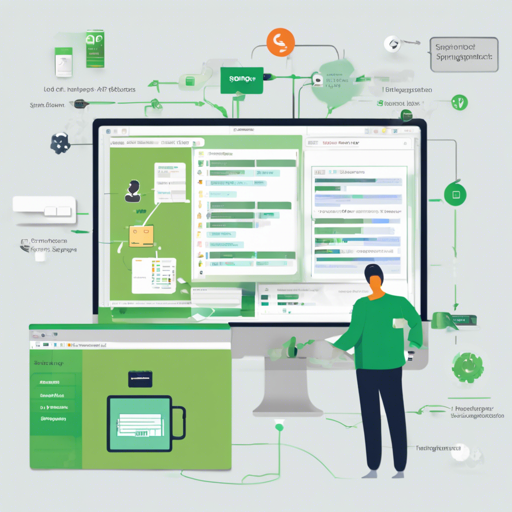API documentation is a crucial aspect of software development, especially when working with Spring Boot. The springdoc-openapi library offers a seamless way to automate the generation of API documentation for your Spring Boot applications. In this guide, we will explore how to get started with springdoc-openapi, integrate it into your project, and troubleshoot any issues that may arise along the way.
Introduction
The springdoc-openapi library infers API semantics during runtime by examining your Spring Boot application’s configurations and class structures. It can generate documentation in multiple formats, including JSON, YAML, and HTML, and it supports various features such as OpenAPI 3, Swagger UI, and OAuth 2.
Getting Started
-
Library for springdoc-openapi integration with Spring Boot and Swagger UI
To integrate springdoc-openapi into your project, follow these steps:
- Add the following dependency to your build file:
<dependency> <groupId>org.springdoc</groupId> <artifactId>springdoc-openapi-starter-webmvc-ui</artifactId> <version>last-release-version</version> </dependency> - Once you add the dependency, the Swagger UI will automatically deploy to your Spring Boot application. You can find the documentation at: http://server:port/context-path/swagger-ui.html.
- For JSON format, the OpenAPI documentation will be available at: http://server:port/context-path/v3/api-docs.
Demo Applications
Check out the following demo applications to understand the integration better:
Integrating the Library without Swagger UI
For those who wish to integrate springdoc-openapi without using Swagger UI, follow these steps:
- Add the following dependency to your project:
<dependency>
<groupId>org.springdoc</groupId>
<artifactId>springdoc-openapi-starter-webmvc-api</artifactId>
<version>last-release-version</version>
</dependency>Error Handling and API Documentation
To enhance your API documentation, remember to declare HTTP response codes using the @ResponseStatus annotation. This is crucial for generating clear and useful API documentation.
Troubleshooting
If you encounter issues during integration, here are some troubleshooting tips:
- Ensure that you’ve included the correct dependencies in your build file.
- Check your server’s configuration settings, including the port and context paths.
- Make sure that any required annotations in your Spring beans (like
@OpenAPIDefinition) are correctly used. - If documentation is not being generated, verify that your API methods are properly annotated, especially with
@ResponseStatus. - For unique configurations or advanced usage scenarios, consult the [full documentation](https://springdoc.org) and community resources.
- For more insights, updates, or to collaborate on AI development projects, stay connected with fxis.ai.
At fxis.ai, we believe that such advancements are crucial for the future of AI, as they enable more comprehensive and effective solutions. Our team is continually exploring new methodologies to push the envelope in artificial intelligence, ensuring that our clients benefit from the latest technological innovations.
Conclusion
By integrating springdoc-openapi with your Spring Boot application, you can automate and enhance your API documentation process, making it easier for developers and users alike to understand and utilize your APIs effectively. Happy coding!

